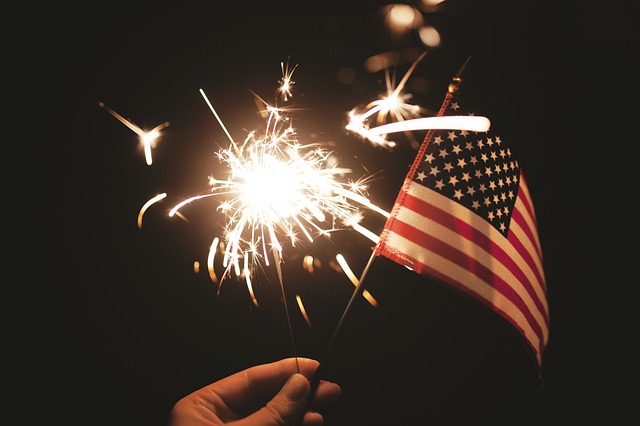No tanks needed in my neighborhood for the Fourth of July
BALTIMORE – In my neighborhood’s Fourth of July parade, we had no tanks on display. Unlike Donald Trump’s Washington, we didn’t model ourselves after Moscow’s Red Square. But we had a gleaming engine from the Glen Avenue Fire Company, and the grandchildren thought that was pretty cool.
In my neighborhood, we didn’t have a series of military fly-overs to conflate patriotism with a president looking to cash in politically. We just had Circuit Court Judge Lawrence Fletcher-Hill read aloud from the Preamble to the Declaration of Independence. And then somebody read “a prayer for peace – even when we don’t always agree with each other.”
And we didn’t have thousands of troops assembled as a symbolic show of support for President Bonespur. In my neighborhood parade, the only people in uniform were boy scouts and brownies who led the big crowd of nearly 1,000 of us in the salute to the flag and the singing of the National Anthem.
It was beautiful at my neighborhood parade. I live in Mount Washington, in northwest Baltimore, where we’ve had a Fourth of July gathering for the past 20 years.
This one choked me up as never before, because I met Susan King and Idilia Johnson there. They sat in an open car, greeting people, with a sign on the front windshield that said “Baltimore Chapter, American Rosie the Riveter Association.”
The two ladies are each 95 years old. When America entered World War II and the guys went off to war, they were among the women who went to work keeping things together back home. Meeting them felt like saying hello to history itself.
Susan King, who lived on Carey Street back then, helped build planes at the Eastern Aircraft operation on Broening Highway, which was converted for the war effort from a Chevrolet plant. After the war, she had a nice career as a public school guidance counselor.
Idilia Johnston was in Cleveland during the war. She became assistant to the comptroller of Ohio Crankshaft. She took the place of a fellow who went off to the fighting. And then, in 1944, she joined the Navy.
Meeting them, I felt I was meeting the best of America. I don’t need tanks as national symbols. I don’t need Donald Trump inviting in his big-ticket donors while cashing in on every heartfelt patriotic instinct for his personal advantage.
I watched some of Trump’s salute and saw hypocrisy in action. We spent a few million bucks for this, and we can’t furnish toothbrushes to frightened children we’ve locked inside cages at our southern border? That’s the new American ideal? Shame on us, if it is.
“July 4 isn’t about politics in the partisan sense,” Maryland Rep. Steny Hoyer told NBC News this week. “It’s about democracy, it’s about freedom, it’s about individual liberties, it’s about the pursuit of happiness.”
But what do we mean when we talk about ”democracy?” Is it personified by tanks and military fly-overs?
Here’s a sweeter sense of it. It’s E.B. White, on another Independence Day, 1943, in the middle of World War II, writing in The New Yorker.
Democracy, he wrote, “is the line that forms on the right. It’s the “don’t” in “don’t shove.” It’s the hole in the stuffed shirt through which the sawdust slowly trickles. It’s the dent in the high hat. Democracy is the recurrent suspicion that more than half of the people are right more than half of the time.
“It’s the feeling of privacy in the voting booths, the feeling of communion in libraries, the feeling of vitality everywhere. Democracy is the letter to the editor. Democracy is the score at the beginning of the ninth. It’s an idea which hasn’t been disproved yet, a song the words of which have not gone bad. It’s the mustard in the hot dog and the cream in the rationed coffee.”
They had mustard in the hot dogs at my neighborhood’s July 4 parade. They served them instead of tanks and military fly-overs.

Michael Olesker, columnist for the News American, Baltimore Sun, and Baltimore Examiner has spent a quarter of a century writing about the city he loves.He is the author of several books, including Michael Olesker’s Baltimore: If You Live Here, You’re Home, Journeys to the Heart of Baltimore, and The Colts’ Baltimore: A City and Its Love Affair in the 1950s, all published by Johns Hopkins Press.

